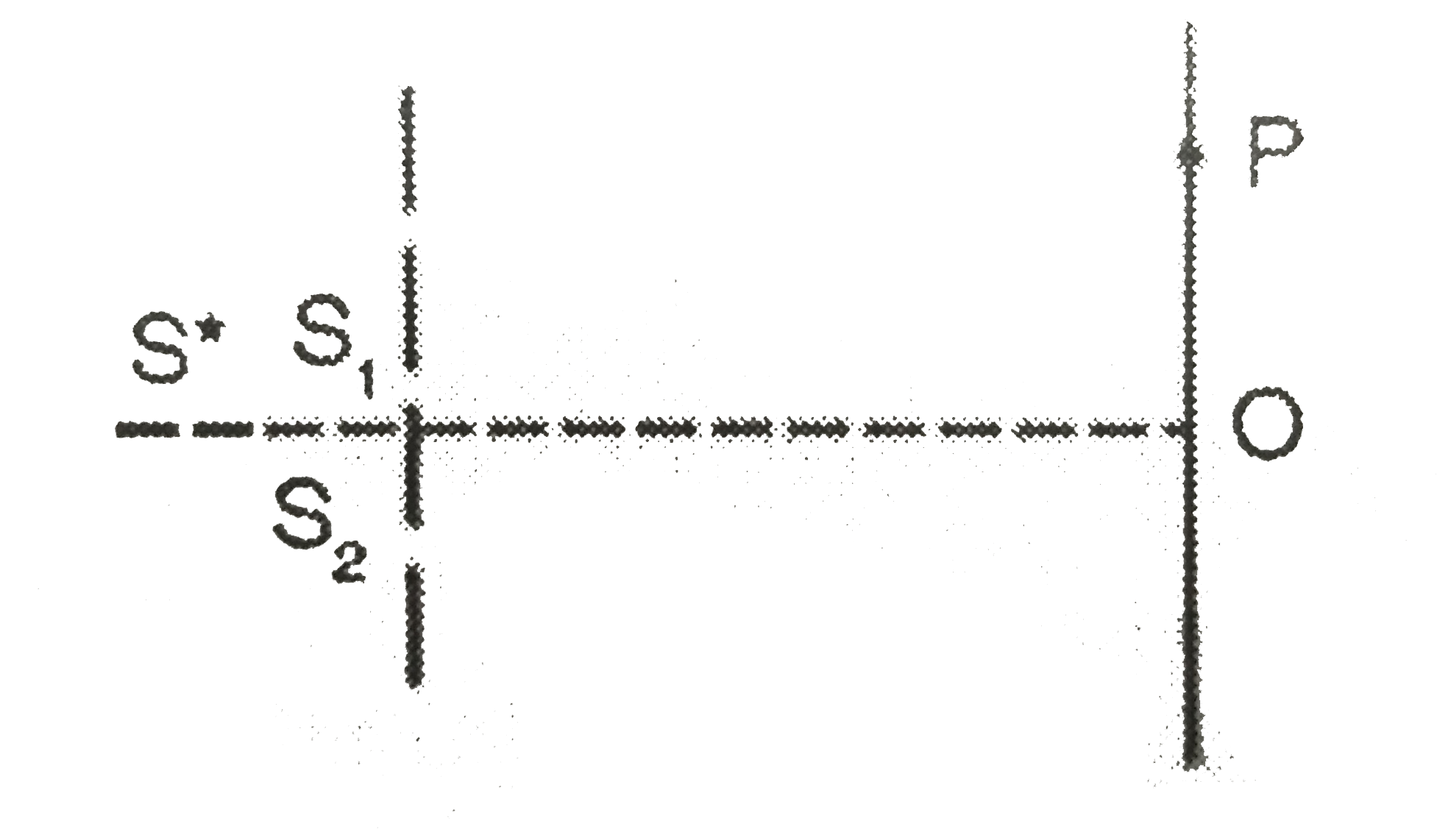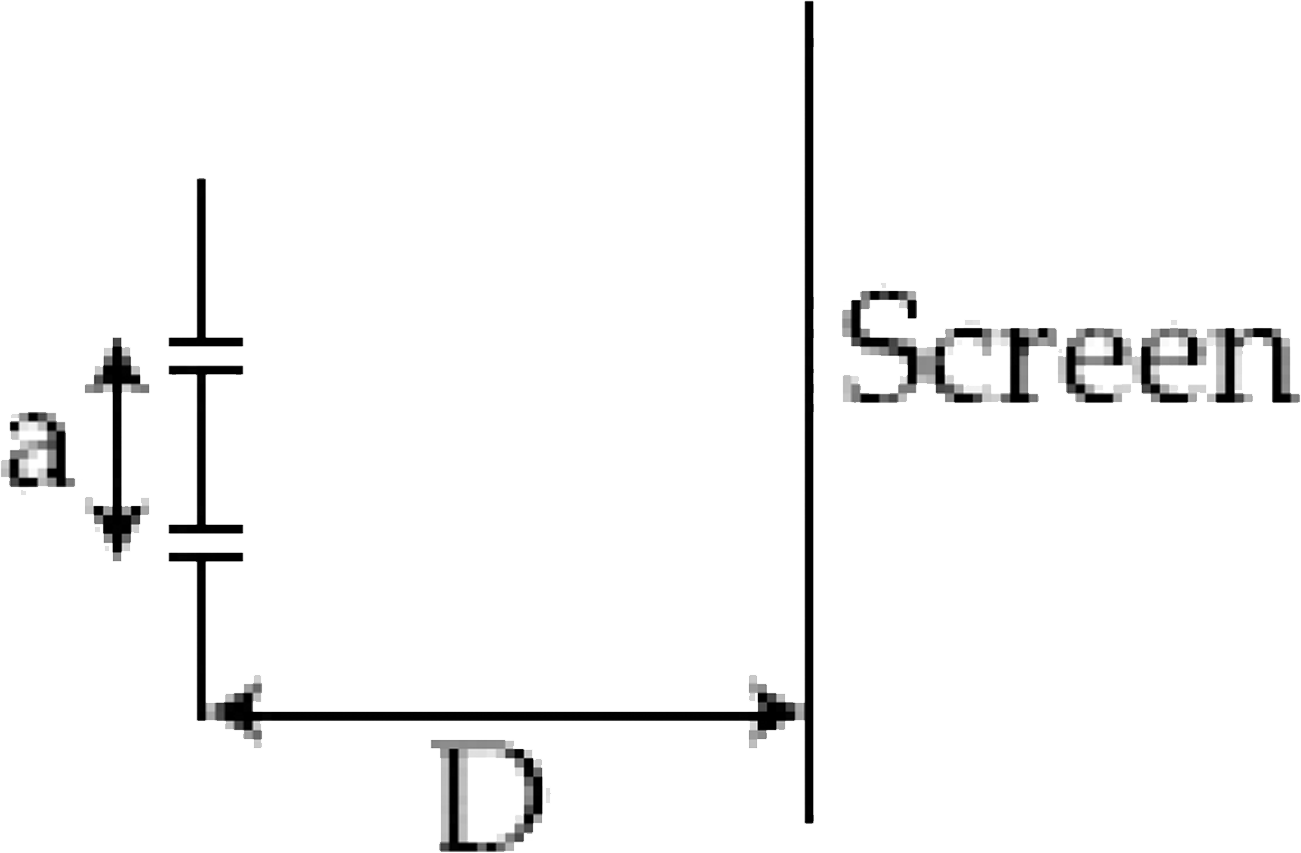The figure shows a modified Young's double slit experimental set-up.
Here SS2−SS1=λ/4.
(a) Write the condition for constructive interference.
(b) Obtain an expression for the fringe width.

Step by step video & image solution for The figure shows a modified Young's double slit experimental set-up. Here SS_(2)-SS1=lamda//4. (a) Write the condition for constructive interference. (b) Obtain an expression for the fringe width. by Physics experts to help you in doubts & scoring excellent marks in Class 12 exams.
Updated on:21/07/2023Similar Questions
State the importance of coherent sources in the phenomenon of interference. In Young's double slit expet-ment to produce interference pattern obtain the conditions for constructive and destructive interference. Hence deduce the expression for the fringe width. How does the firinge width get affected, if the entire experimental apparatus of Young's is immersed in water ?
View Solution(i) In Young's double slit experiment the condition for (a) constructive and (b ) destructive interference at a point on the screen .
View Solution
Knowledge Check
In a Young's double slit experiment, let S1 and S2 be the two slits, and C be the centre of the screen. If ∠S1CS2=θ and λ is the wavelength, the fringe width will be
AλθBλθC2λθDλ2θ
Answer the following:
(a) In Young's double slit experiment, derive the condition for (i) constructive interference and (ii) destructive interference at a point on the screen.
(b) A beam of light consisting of two wavelengths, 800 nm and 600 nm is used to obtain the interference fringes in a Young's double slit experiment on a screen placed 1.4 m away. If the two slits are separated by 0.28 mm, calculate the least distance from the central bright maximum where the bright fringes of the two wavelengths coincide.
View SolutionThe figure shows a Young's double slit experimental setup. It is observed that when a thin transparent sheet of thickness t and refractive index μ is put front of one of the slits, the central maximum gets shifted by a distance equal to n fringe widths. If the wavelength of light used is λ, t will be :

View SolutionIn Young's double-slit experiment, the slit are illuminated by monochromatic light. The entire set-up is immersed in pur water. Which of the following act cannot restore the oringinal fringe width?
View SolutionAnswer the following:
(a) what are coherent sources of light ? Two slits in Young's double slit experiments are illuminated by two different sodium lamps emitting light of the same wavelength. Why is no interference pattern observed?
(b) Obtain the condition for getting dark and bright fringes in Young's experiment. Hence write the expression for the fringe width.
(c) If s is the size of the source and its distance from the plane of the two slits, what should be the criterion for the interference fringes to be seen?
View SolutionTwo slits in Young's double slits experiment are spaced 0.1 millimeter apart. If the fringe width is obtained as 5 mm on screen 1.5m away from slits. Find the wavelength of the light used.
View SolutionA monochromatic light of wavelength 500nm is incident normally on a single slit of width 0.2 nm of produce a diffraction pattern. Find the angular width of the central maximum obtained on the screen.
Estimate the number of fringes obtained in Young's double slit experimental with fringe width 0.5mm, which can be accommodated within the region of total angular spread of the central maximum due to single slit.
View Solution(i) Write two points to distinguish between interference and diffraction fringes.
(ii) In a Young 's double slit experiment , fringes are obtained on a screen placed at certain distance away from the slits . If the screen is moved by 5 cm towards the slits , the fringe width changes by 30 μm . Given that the slits are 1 mm apart , calculate the wavelength of the light used.
View Solution
